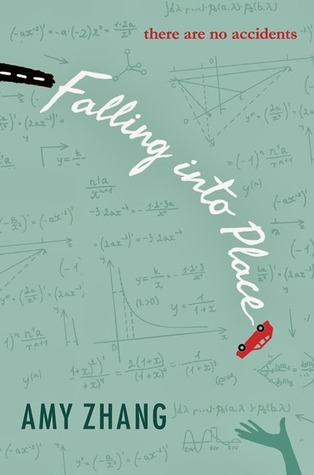Liz Emerson is a terrible person. Absolutely awful.
In Amy Zhang's Falling into Place, Liz has decided that she has made enough of a mess of this world and it's time for her to go. As she meticulously plans her suicide, she has three rules:
First, it would be an accident. Or it would look like one.
Second, she would do it in a month. Well, three weeks.
And three, she would do it somewhere far away. She wanted a stranger to find her body, so no one she loved would see her broken.
Liz is a seventeen-year-old junior and one of the most popular girls at school. She has spent years cultivating her popularity and achieving it through any means necessary. The list running through her mind of all the people's lives she has ruined to secure her popularity, to maintain it, or just because she could is painfully long. It's painful even to Liz. She hates what she has become, what she has done to the people around her, even the people she loves and never meant to hurt.
Some nights, Liz looked back and counted the bodies, all those lives she had ruined simply by existing. So she chose to stop existing.
She hated what she was and didn't know how to change.
Liz is desperate. She knows she is an awful person, but she doesn't seem to know how to fix what she has done. She feels that the world will be a better place without her in it. What she doesn't know is how differently the people around her feel. Certainly, the hospital waiting area is filled with drama-seeking classmates who aren't really her friends, but her two closest friends, her mother, and a boy she ruined freshman year are also there praying she will survive.
I really liked this book. It was a very quick read and it kept my interest. Two of the most interesting aspects of this book are the time line and the narrator. The time line jumped around quite a bit- it begins on the day of Liz's suicide, but then it bounces between counting down a few months before, a few days before, and a few minutes before the crash. None of it is in order and I felt like that added to the intensity. We learn about Liz and why she is doing what she is doing bits at a time. If it were all laid out chronologically I don't think it would have been as interesting.
Adding to the intrigue is the question of who is telling us this story? It is someone who has been with Liz her whole life, someone who has seen her at her most vulnerable, someone who knows Liz better, possibly, than she knows herself. This may be my favorite narration technique. I was confused at first, but when it dawned on me, I loved it.
I can see how some readers may be concerned that this book excuses, or-more frighteningly- encourages, the use of suicide to atone for the horrible things someone has done. I don't see that. When I read this book, I see that the people around Liz are affected by her decision in ways she doesn't foresee. I see a distressed young woman who doesn't recognize all the options before her. She need help, but she doesn't know how to ask for it. I think when readers join Liz on her journey, those options are more obvious to them than they are to the main character. I think this book gives insight into the life of someone who needs to speak up and maybe by reading this book, it will help the reader speak up, to seek help.
If you or someone you know needs help, please speak up. If you don't know who to ask or you don't know what to say, please know that there are people who want to help you.
National Suicide Prevention Lifeline
1-800-273-TALK
or
www.suicidepreventionlifeline.org
or
Crisis Text Line
text LISTEN to 741-741










